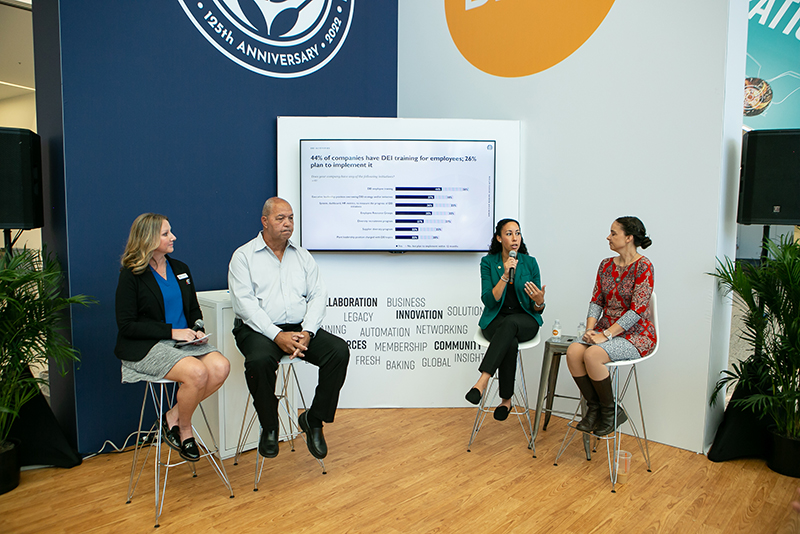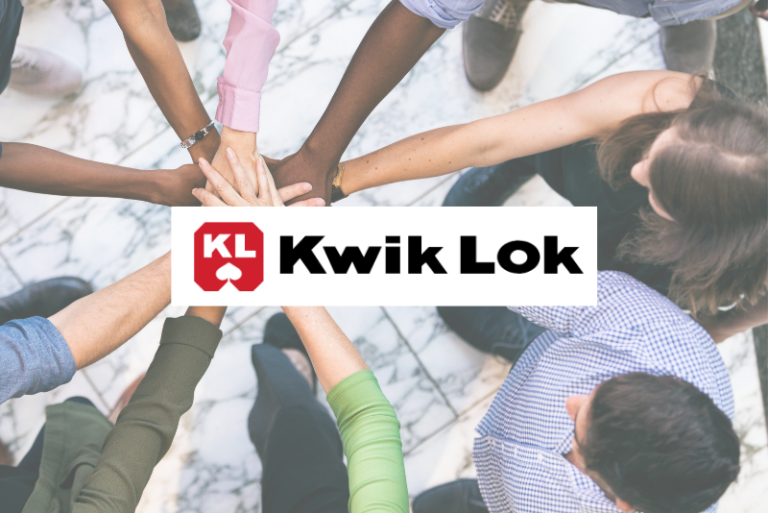LAS VEGAS — As labor challenges persist in the American workforce, BEMA and the American Bakers Association (ABA) have each formed a task force and working group, respectively, to explore the opportunities and benefits of best practices in diversity, equity and inclusion (DEI).
During the International Baking Industry Exposition (IBIE), held Sept. 18-21 in Las Vegas, the two organizations teamed up for one panel discussion, first in the ABA/BEMA booth and again during an IBIEducate session.
“IBIE was the perfect place to bring these two groups together and have the conversation all as one,” said Emily Bowers, VP of education and operations for BEMA, who moderated the panel. “This really is about the industry.”
Panelists included Nathan Norris, director of DEI for Highland Baking Co.; Felisa Stockwell, VP of global people and culture for Dawn Foods; and Christy Pettey, chief people officer for Kwik Lok.
According to a study from ABA, about 44% of companies in the baking industry already have employee training for DEI, and 26% of companies plan to start education programs for continuous learning around diversity.
Whether a company is early in its DEI journey or a trailblazer far down the path, DEI is an evolution, one that should be addressed and modified on a regular basis. In that respect, it helps to consistently think of DEI as a starting point rather than a final destination.
“It’s important to look at your current process,” Pettey said. “Is it equitable? Does it affect each group the same way, or are things that benefit one group over another? Those are great places to start because you can make sure what you’re currently doing is supporting a diverse and inclusive environment.”
Once initiatives are in place — whether they’re educational or procedural — it’s important to effectively monitor and track progress, which is not always easy to do. While some teams might feel it’s important to put sophisticated systems in place, it doesn’t have to be complex.
It starts with identifying that “North Star.” For example, Dawn Foods set a goal of increasing diversity for women and people of color at the leadership level across the organization. For initiatives like this, it’s important to track metrics such as headcounts and turnover.
“We’re looking at our recruitment data,” Stockwell said. “We look at who we are interviewing and who we’re bringing in. We don’t necessarily need to have a quota of ‘X’ number of women or people of color. We’re looking at year-over-year improvement and growth.”
Qualitative and quantitative metrics are both important in tracking diversity initiatives, whether it’s qualitative team member surveys and employee steering committees, or that quantitative headcount and turnover tracking.
“What gets measured gets done,” Stockwell advised.
Pursuing these initiatives not only creates a better working environment, but it also serves to attract an engaged workforce and loyal customers. Data from the Manufacturing Institute indicated that the top two reasons companies develop diversity initiatives are to become an employer of choice and reflect the community in which they operate.










